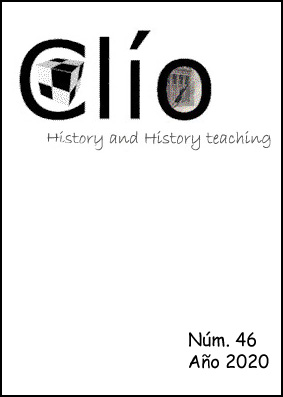Teaching the Nuremberg Trials in a penal institution. An educational proposal
DOI:
https://doi.org/10.26754/ojs_clio/clio.2020465293Keywords:
Didactics of Social Sciencies, Didactics in penal institutions, Adult education, Education in penal institutions, HolocaustAbstract
The penal institutions have educational modules where the inmates are provided with regulated education to favor their reinsertion, as stated in the Spanish Constitution of 1978, as well as in the Secondary Education decrees for adults (ESPA). Within this framework, an educational proposal is offered here to develop a controversial subject, such as the Holocaust, in an educational environment that is especially sensitive to educational processes in situations of confinement, a 4th grade ESPA classroom in a penitentiary center, through the knowledge of the responsibilities emanating from the Nuremberg Trials. Using dramatic representation as a didactic resource, since the inmates would have to reproduce the different roles of the participants in the trials, it is intended, in the different sessions in which this proposal is structured, to deal with moral responsibilities, to understand the necessary existence of strong institutions with adequate codes of coexistence, and to develop empathy with the victims of the Nazi regime, with the aim of developing civic values among the inmates.
Downloads
References
Ambrós, A. y Breu, R. (2007). Cine y educación. Graó.
Arendt, H. (1999). Eichmann en Jerusalén: un estudio sobre la banalidad del mal. Editorial Lumen.
Beatriz Acín, A. (2013). La educación secundaria de adultos en la actualidad. Un estudio comparado entre Córdoba (Argentina) y Cataluña (España). Universitat de Barcelona. (Tesis doctoral).
Boudrias, M. y McDougall, I. (productores) y Simoneau, Y. (director) (2000). Núremberg. [Cinta cinematográfica].
Finkelstein, N. G. (2014). La industria del Holocausto. Reflexiones sobre la explotación del sufrimiento judío. Ediciones Akal.
Gobierno de Aragón (2019). Orden ECD/1693/2019.
Gray, M. (2015). Teaching the Holocaust. Practical approaches for ages 11-18. Routledge.
Hayes, P. y Roth, J. K. (2010). The Oxford Handbook of Holocaust Studies. Oxford University Press.
Kramer, S. (productor y director). (1961). ¿Vencedores o vencidos? [Cinta cinematográfica].
Overy, R. (2003). Interrogatorios. El Tercer Reich en el banquillo, Tusquets.
Pantoja Chaves, A. y Moroño Díaz, A. (2019). El cine como recurso en la enseñanza de la Historia. En A. M. Hernández Carretero (Coord.), Estrategias y recursos didácticos para la enseñanza de las Ciencias Sociales (pp. 125-153). Ediciones Pirámide.
Salamanca García, L. (2016). Intervención educativa en prisión: memoria y deseo. Revista de Educación Social, 22, 159-173.
Temon, Y. (1995). El Estado criminal: los genocidios en el siglo XX. Editorial Península.
Valencia Villa, H. (2000). El genocidio y los crímenes de lesa humanidad ante la Corte Penal Internacional. Revista de Estudios Sociales, 7, 85-90.
Vilanova i Vila-Abadal, F. (2004). Nurembergs. Lectures dels processos contra criminals de guerra a la Barcelona franquista. Fundació Pi i Sunyer.
Downloads
Published
How to Cite
Issue
Section
License
Copyright (c) 2020 Miguel Ángel Pallarés Jiménez, Sergio Sánchez Martínez

This work is licensed under a Creative Commons Attribution-NonCommercial-ShareAlike 4.0 International License.
This work is licensed under a Creative Commons Attribution-NonCommercial-ShareAlike 4.0 International License.
Copyright remains the property of authors. Permission to reprint must be obtained from the authors and the contents of JoS cannot be copied for commercial purposes. JoS does, however, reserve the right to future reproduction of articles in hard copy, portable document format (.pdf), or HTML editions of JoS.






